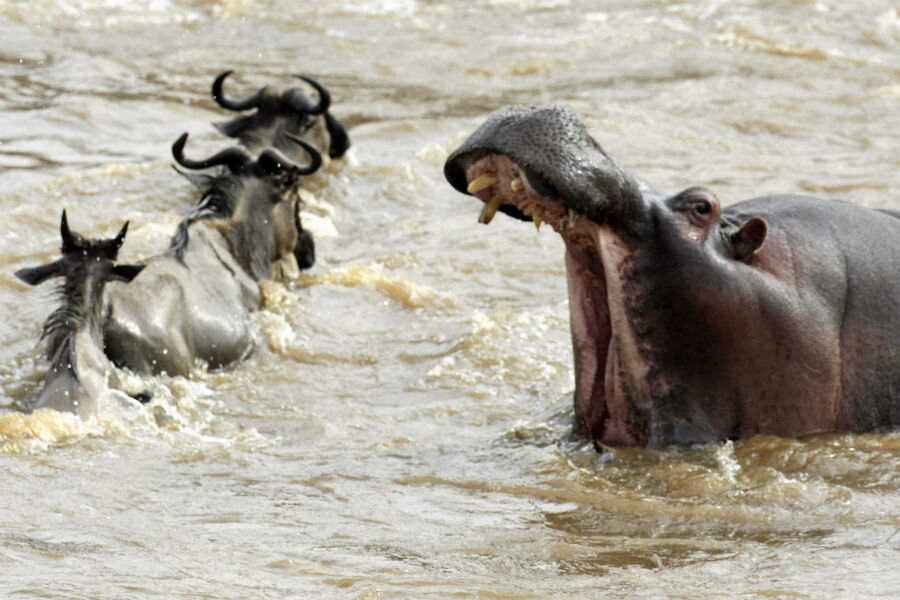The Serengeti to the Masai Mara: How to watch the wildest show on Earth
Loading...
It is perhaps the wildest show on Earth. Each year about a million wildebeest, half a million gazelle, and 200,000 zebra journey from the Serengeti park in Tanzania to the Masai Mara reserve in Kenya, following a clockwise rotation dictated by rainfall and grazing land.
The wild display will be broadcast live on the web starting Tuesday Sept. 29 and ending Oct. 5, and include expert commentary in an effort by Kenya to promote tourism, its most vital ecosystem being the Masai Mara reserve. Broadcasts of 10 to 20 minutes will run daily on the periscope app on Twitter. Viewers will need to register on herdtracker, the website of app developers.
"Serengeti-Mara ecosystems [are] considered to be perhaps the last of the ecosystems … in which … human impact is less than 5 percent," said professor Karim Hirji, former director of the Serengeti Wildlife Research Center in an interview with ABC News.
The annual migration – 700 miles round trip – is quite literally the circle of life.
"Without the migration, it's harder to conceive Serengeti-Mara being what it is today," Mr. Hirji added. "Everything else survives within that migration – the predators and so on the vegetation."
The drama on the plains is what perpetuates the ecosystem: For the 2 million herbivores that make the journey, including the birth of some 300,000 wildebeest calves, scores inevitably fall prey to the thousands of waiting crocodiles in the Mara river, and after successful passage through the Serengeti are then faced with the world’s highest concentrations of lions and other carnivores in the Masai Mara, drawing thousands of tourists on safari, The Guardian reports.
The broadcasts will also be available on YouTube and on the Herd Tracker Live website. Notifications on schedules will be offered on the @herdtracker and @makeitkenya handles.








